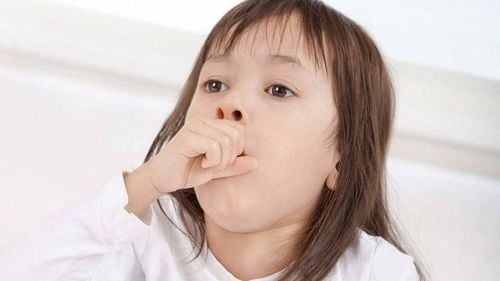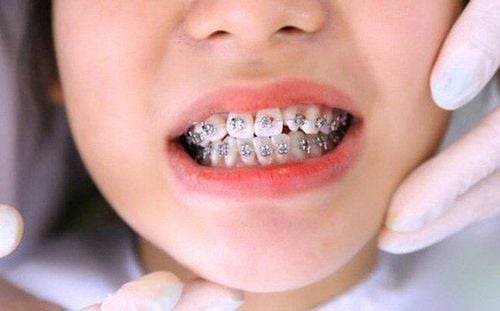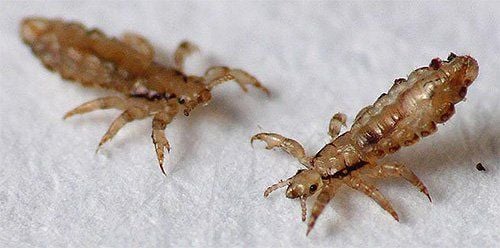This is an automatically translated article.
The article is professionally consulted by Th.S BS. Ngo Thi Oanh - Doctor of Pediatrics - Neonatology - Vinmec Ha Long International Hospital
Cough is one of the most common symptoms of illness in children. Coughing sounds scary, but it's usually not a sign of a serious condition. In fact, coughing is a healthy and important reflex that helps protect the airways in the throat and chest. Don't assume a toddler or young child's cough is just a cold. Here are the common causes of a child's cough, the best treatment, and when you should be concerned.
1. What is a cough?
Under normal physiological conditions, coughing is a protective physiological reflex. The upper airway begins at the back of the nose and moves down the vocal cords. The lower airways include the trachea, the right and left bronchi leading to the lobes of the lungs, the small tubes of the lungs called the bronchioles, and the air sacs. Any foreign object other than air (such as mucus, food, etc.) that enters the airway below the vocal cords causes the cough reflex. Thanks to this cough reflex, by exhaling very strongly, it helps to clear the airways, expel sputum, secretions and foreign objects into the respiratory tract, helping the respiratory villi to function properly.
2. What causes cough?
2.1. Due to cold, flu, bronchitis infection All of these causes can make a child's cough last longer. Colds tend to cause mild to moderate dry coughs, while flu causes more severe coughs. If laryngitis, the child will cough a lot at night and with difficulty breathing. Viral infections are not treated with antibiotics, instead, children can be given cough suppressants and expectorants.
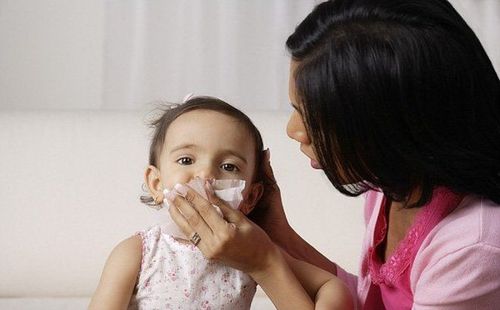
Cảm lạnh hay cảm cúm đều có thể khiến những cơn ho của trẻ bị kéo dài
2.2. Acid reflux Symptoms often appear in children such as coughing, frequent vomiting, spitting up, bad breath or heartburn. Treatment for reflux depends on the child's age, health, and other problems. You can use this trick to eliminate irritating foods from your child's diet (such as chocolate, mint, fried foods, spicy, carbonated drinks). Feed your child at least two hours before bedtime, eating several small meals throughout the day.
2.3. Asthma Symptoms are different in every child, making it hard to tell the difference. The typical symptom in children with asthma is wheezing, often at night. Treatment of asthma in children depends on the cause and includes limiting smoke, dust, air pollution or fragrances. It's better to take your child to the doctor when he or she has symptoms of asthma.
2.4. Allergies/sinusitis May cause persistent cough, as well as an itchy throat, runny nose, watery eyes, sore throat, or rash. To find out exactly if your child has allergies or sinusitis, take your child to the doctor for a triage. Take care to abstain from allergens such as food, pollen, animal dander, and dust.
2.5. Whooping cough is a respiratory infection caused by the bacterium Bordetella pertussis. Children with whooping cough will have continuous coughs without being able to breathe between episodes. At the end of the cough, when the child takes a deep breath, it will make a "cough" sound. Other symptoms are a runny nose, sneezing, mild cough, and low-grade fever.
Whooping cough can occur at any age, but is most severe in children under 1 year of age who have not received the pertussis vaccine, which is part of the DPT (diphtheria, tetanus, pertussis) vaccine. It is highly contagious, so all children should be vaccinated against whooping cough at 2 months, 4 months, 6 months, 15 months and again at 4–6 years of age. Whooping cough can be treated with antibiotics.
2.6. Cystic fibrosis Common in young children with coughs with yellow or pale green sputum are the most severe signs that children experience.
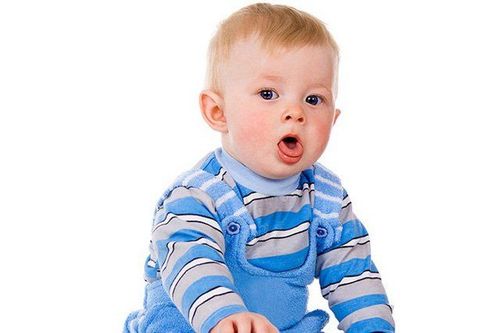
Các cơn ho có đờm xanh đờm vàng là dấu hiệu nặng nhất của xơ nang
3. Toddler Cough: When to Worry?
Call an ambulance immediately if:The child's skin, lips, and fingernails turn blue or gray when coughing. Severe difficulty breathing, breathing faster than usual, or the child seems to have trouble breathing. The child is unconscious or has stopped breathing If the child has one or more of the following symptoms along with a cough, see a doctor immediately:
Children under 4 months of age Wheezing when exhaling. Coughing up mucus that is yellow, green, or streaked with blood Makes a "cough" sound when inhaled after coughing up blood Coughing up blood Refusing to drink or eat anything for a long time Has a fever and does not acting like normal weak or irritable fussy. Have a chronic illness, such as heart or lung disease Cough so severe that the child vomits Persistent cough after choking on something Cough that doesn't get better after about two weeks. Have a weak immune system or are not fully immunized Dehydration; signs include dizziness, drowsiness, dry or sticky mouth, sunken eyes, crying with few or no tears, or urinating less often (or less wet diapers).
4. Types of cough in children
Dry cough: is caused by infections of the upper respiratory tract (nose and throat) such as colds, flu. Cough without mucus. Cough with phlegm: caused by secretions and mucus in the airways common in asthma, infections.
5. Cough symptoms and meanings
5.1. Cough with stuffy nose Cause: common cold Symptoms: Sneezing, runny nose, eating little or not eating, low-grade fever. How to fix: Do not give children cough suppressants, should give them honey if they are over 1 year old. You can give your child 2 to 5ml of honey to thin the mucus and soothe the cough. Or mothers can apply menthol on the skin on the chest, neck, and soles of the feet for children with children over 2 years old.

Mật ong có thể làm loãng chất nhày và dịu cơ ho của trẻ
5.2. Cough accompanied by cold breath and difficulty breathing Cause: respiratory syncytial virus (RSV) - most common in infants and young children, although children of all ages can get it. Usually Respiratory Syncytial Virus only causes cold-like symptoms in healthy children. But it can lead to more serious respiratory illnesses, such as bronchiolitis and pneumonia, especially in infants younger than a year old. Symptoms : Cough getting worse, Wheezing; Rapid breathing; Fever; Lips and fingernails are bluish or gray. Treatment: most children recover from RSV without treatment. But take your child to the doctor if you suspect his illness has progressed to bronchiolitis and pneumonia. Or you can also apply common cold remedies as mentioned in children. 5.3. Cough with fever and difficulty breathing Cause : Pneumonia or bronchitis Symptoms : Body aches, chills Treatment : If your child has symptoms of pneumonia or bronchitis take them away go to doctor. Your child may need antibiotics to clear up the infection and cough. 5.4. Cough, especially at night Cause: infection of the vocal cords, trachea and bronchial tubes leading to swelling. Cough caused by swollen vocal cords produces a sound similar to barking. Symptoms: Cough a lot at night; A high-pitched whistling sound heard when a child breathes in. Remedy: The cough sounds serious, but in most cases it can be treated at home. You can apply some of the following tips: + Comfort your child to calm him down and help him breathe better if he wakes up coughing by vibrating the chest (cup your hand and pat the child's back in the opposite direction). from bottom to top, use wrist force not arm strength).
+ Make sure your child is drinking plenty of warm water.
+ Raise the child's head. If your baby is over a year old, you can try elevating her head a little while she sleeps to help ease the cough.
+ Use a cool mist humidifier or take your child to a steam bath. This may help reduce airway swelling, although it has not been scientifically proven.
5.5. Persistent cough Cause: allergy (body's reaction, usually an overactive immune system); asthma (caused by inflammation of the lining of the air ducts to the lungs); environmental irritants (which can include things like cigarette smoke, pipe tobacco, dust or pollution) and sinusitis (an inflammation of the lining of the nose and sinuses. It can be a virus or bacteria) Symptoms: stuffy or runny nose with clear mucus; Cough after running around, at night or after exposure to cold (if it's asthma); Cough that gets worse at night and when lying down, and runny nose that lasts for at least 10 days with no signs of improvement (sign of sinusitis) Treatment: + Keep allergens away from your child maximum possible.
+ If you suspect the cough is caused by allergies, asthma or sinusitis, take your child to see a doctor.
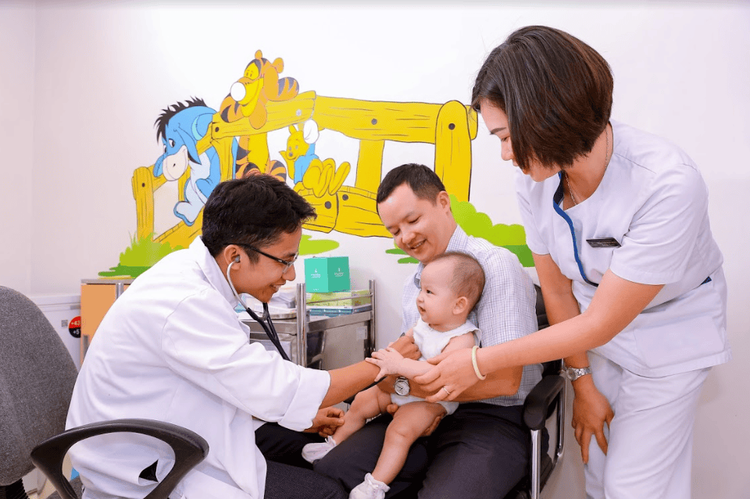
Cha mẹ nên đưa bé đi khám bác sĩ nếu cơn ho của trẻ kéo dài dai dẳng
5.6. Cough without signs of illness Cause : swallowing or inhaling foreign body Symptoms : Cough lasting a week or more without any other signs of illness (such as runny nose, fever, or coma) or allergies (clear secretions). How to treat: Take the child to see a doctor if he suspects that the child is coughing due to a foreign body, the doctor will give the child a chest X-ray to identify the foreign body. If the X-ray suspects a foreign body, the doctor may order the child to have a bronchoscopy. 5.7. Cough with a "cough" sound. Cause : Whooping cough Symptoms: Children with whooping cough often cough non-stop for 20 or 30 seconds, then have difficulty breathing before the next cough begins. Cold symptoms, such as sneezing, runny nose, and mild cough, for up to two weeks before the onset of more severe coughs. Treatment: If your child has any of these symptoms, take them to the doctor. 5.8. Cough with thick yellow or green sputum: Cause: Cystic fibrosis Symptoms: Recurrent pneumonia or sinus infection, no weight gain, salty skin, greasy apple stools. Treatment: You should see a doctor for the best treatment plan. They may prescribe antibiotics and expectorants to relieve your child's cough. 5.9. Frequent coughing: Cause : Habitual Symptoms : No special symptoms , maybe after a period of illness and until it goes away but the child continues to cough even when the child is healthy How to treat : Information Usually after an illness, children will stop coughing on their own. But if the child continues to cough as a habit, you can apply the way to let the child suck on lozenges or prepare folk remedies to reduce cough for children, but note that it is only used for children over 1 year old.

Nếu trẻ trên 1 tuổi thường xuyên bị ho cha mẹ có thể cho bé ngậm các bài thuốc dân gian
6. Is it necessary to use medicine to treat cough in children?
Most coughs are caused by viruses and only need definitive treatment. Sometimes, this process can take up to 2 weeks. Doctors usually don't prescribe antibiotics because they only work against bacteria.
Unless the cough is affecting your child's sleep, no cough medicine is needed. Medicines can cure a cough, but they do not treat the cause of the cough.
The American Academy of Pediatrics recommends that you do not take medicine without your doctor's approval even if you think your child has just the common cold. The following are recommended medicines by age:
- Under 4 years old: do not give cough or cold medicine to children
- From 4-6 years old: Only use the above medicines with the consent of the doctor doctor.
- Ages 6 and up: You can give your child an over-the-counter cough or cold medicine just make sure the medicine is appropriate for the child's age and measure each dose exactly as directed. Also, never give a child more than one cough or cold medicine at the same time. They often include many of the same ingredients that can cause overdose or drug interactions.
Pediatrics department at Vinmec International General Hospital is the address for receiving and examining diseases that infants and young children are susceptible to: viral fever, bacterial fever, otitis media, pneumonia in children, .... With modern equipment, sterile space, minimizing the impact as well as the risk of disease spread. Along with that is the dedication from the doctors with professional experience with pediatric patients, making the examination no longer a concern of the parents.
If you have a need for consultation and examination at Vinmec Hospitals under the nationwide health system, please book an appointment on the website for service.
Please dial HOTLINE for more information or register for an appointment HERE. Download MyVinmec app to make appointments faster and to manage your bookings easily.
References: babycenter.com, kidscountryinc.com, webmd.com




